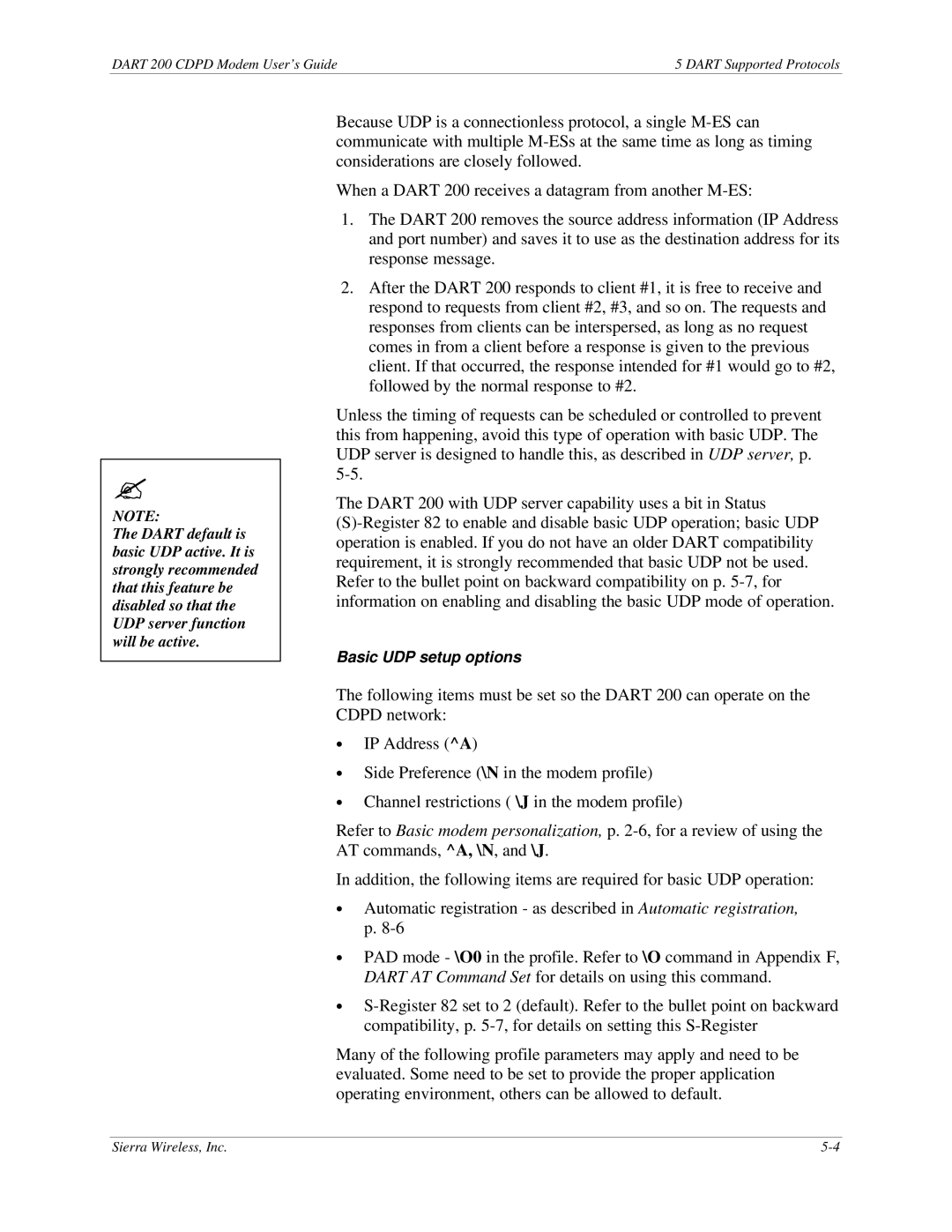
DART 200 CDPD Modem User’s Guide | 5 DART Supported Protocols |
?
NOTE:
The DART default is basic UDP active. It is strongly recommended that this feature be disabled so that the UDP server function will be active.
Because UDP is a connectionless protocol, a single
When a DART 200 receives a datagram from another
1.The DART 200 removes the source address information (IP Address and port number) and saves it to use as the destination address for its response message.
2.After the DART 200 responds to client #1, it is free to receive and respond to requests from client #2, #3, and so on. The requests and responses from clients can be interspersed, as long as no request comes in from a client before a response is given to the previous client. If that occurred, the response intended for #1 would go to #2, followed by the normal response to #2.
Unless the timing of requests can be scheduled or controlled to prevent this from happening, avoid this type of operation with basic UDP. The UDP server is designed to handle this, as described in UDP server, p.
The DART 200 with UDP server capability uses a bit in Status
Refer to the bullet point on backward compatibility on p.
Basic UDP setup options
The following items must be set so the DART 200 can operate on the CDPD network:
∙IP Address (^A)
∙Side Preference (\N in the modem profile)
∙Channel restrictions ( \J in the modem profile)
Refer to Basic modem personalization, p.
In addition, the following items are required for basic UDP operation:
∙Automatic registration - as described in Automatic registration, p.
∙PAD mode - \O0 in the profile. Refer to \O command in Appendix F, DART AT Command Set for details on using this command.
∙
Many of the following profile parameters may apply and need to be evaluated. Some need to be set to provide the proper application operating environment, others can be allowed to default.
Sierra Wireless, Inc. |
